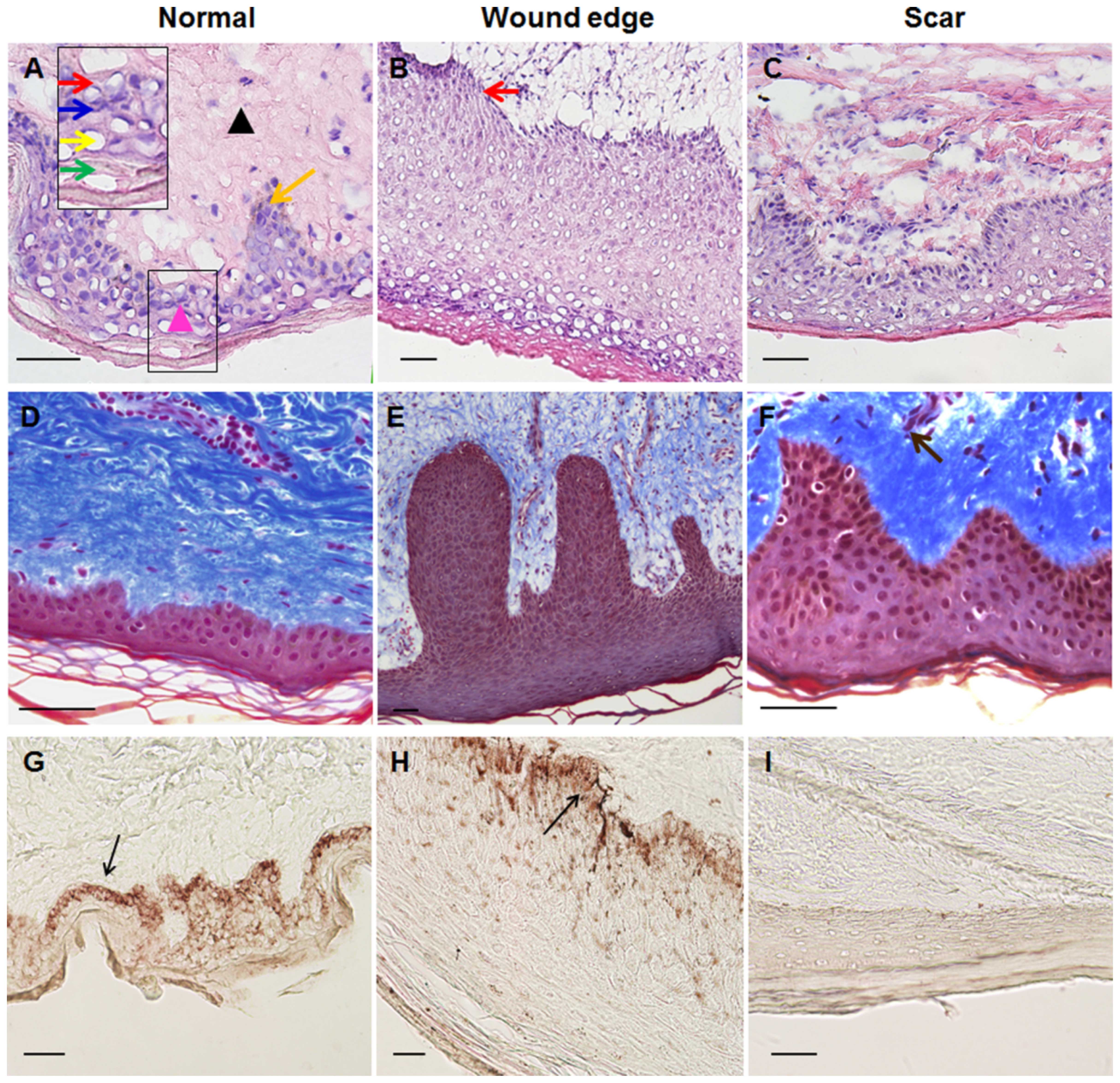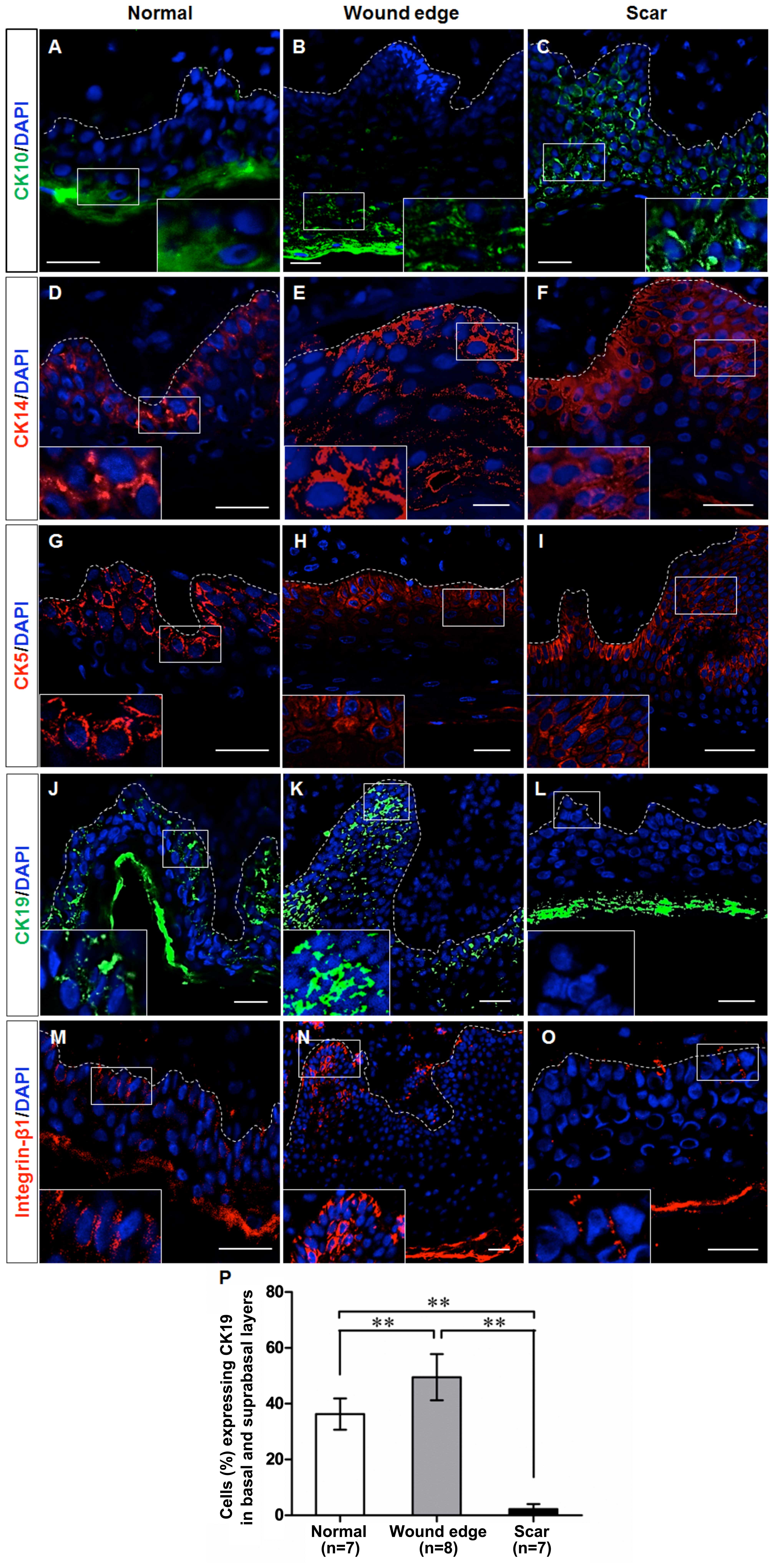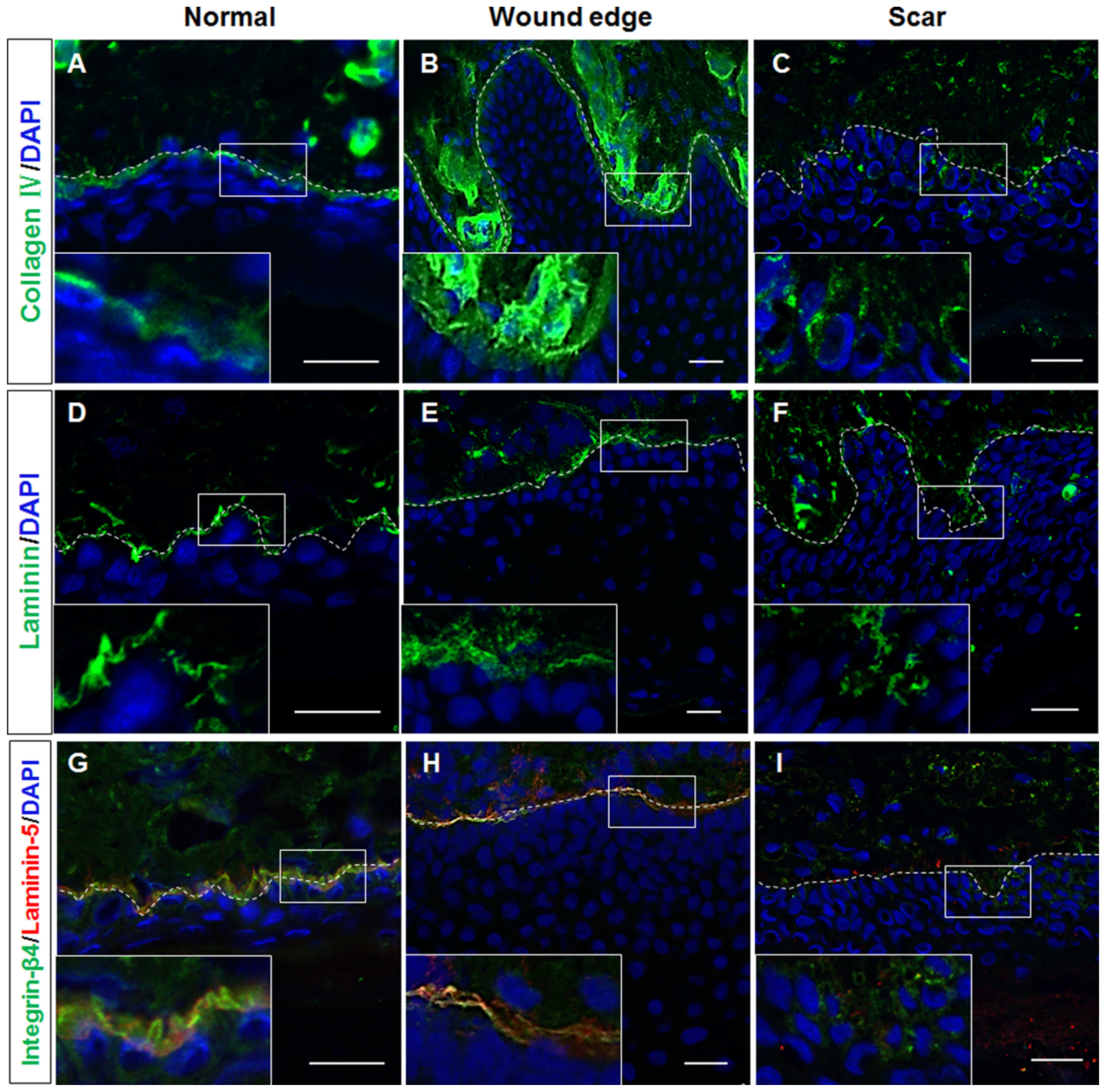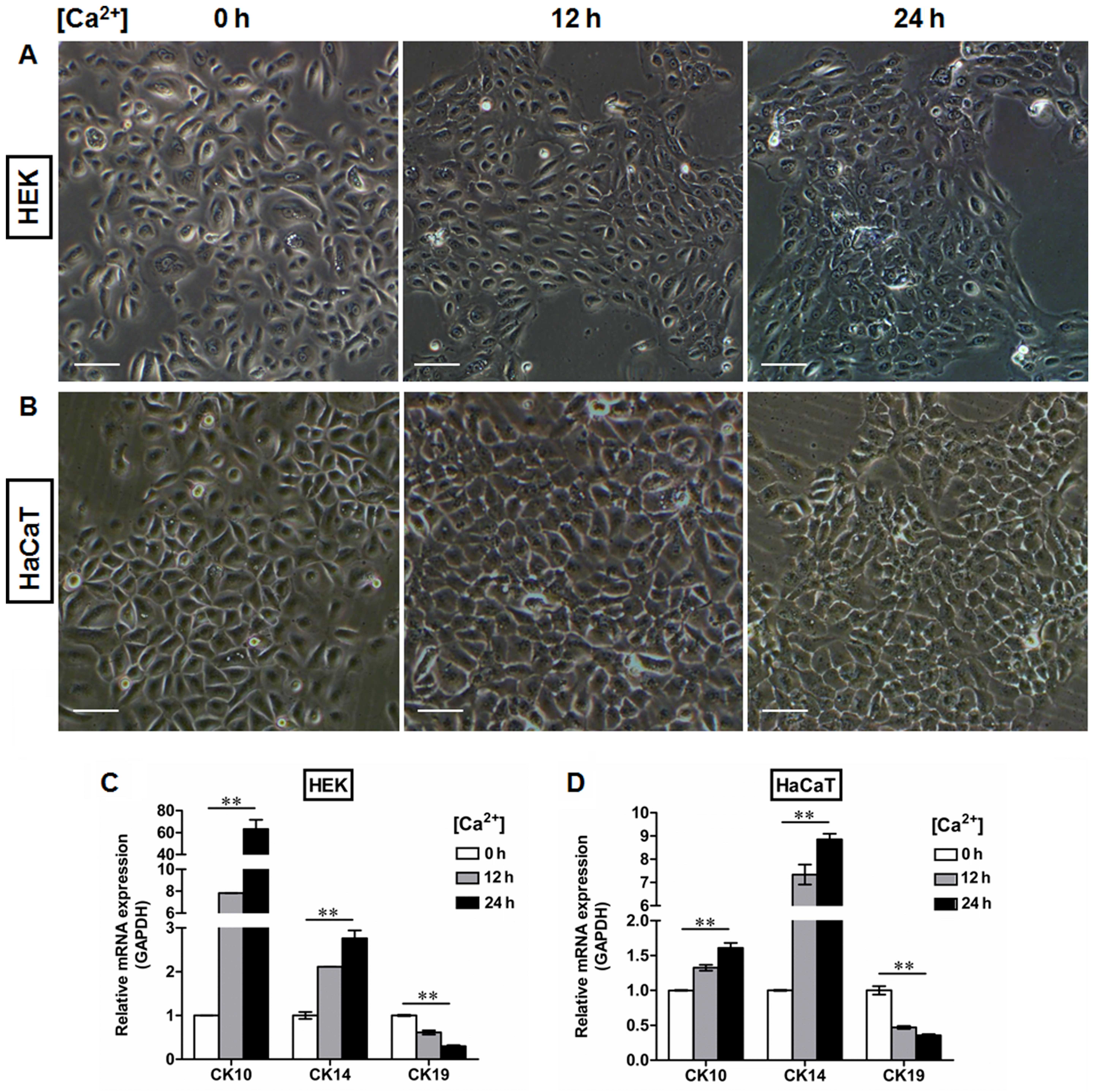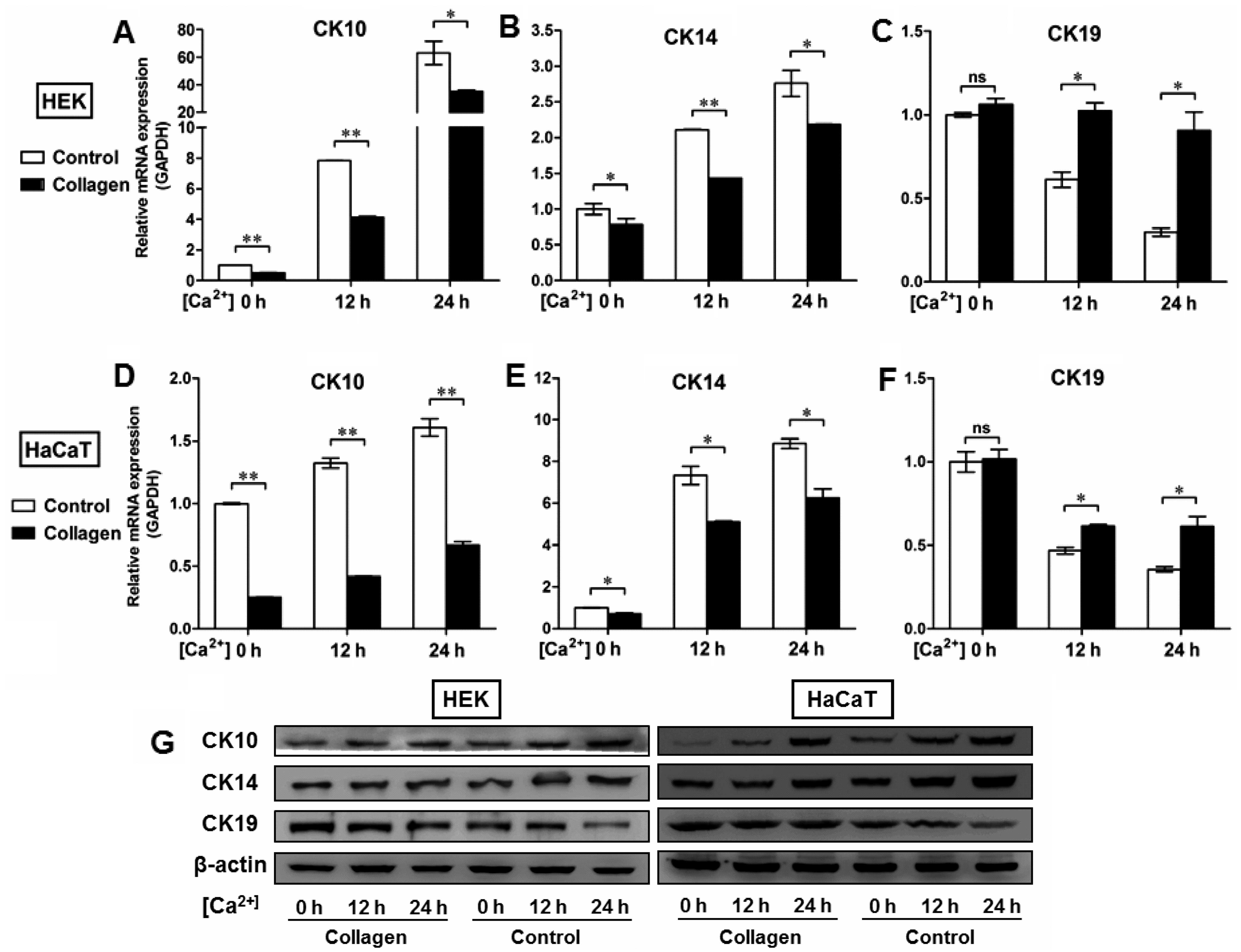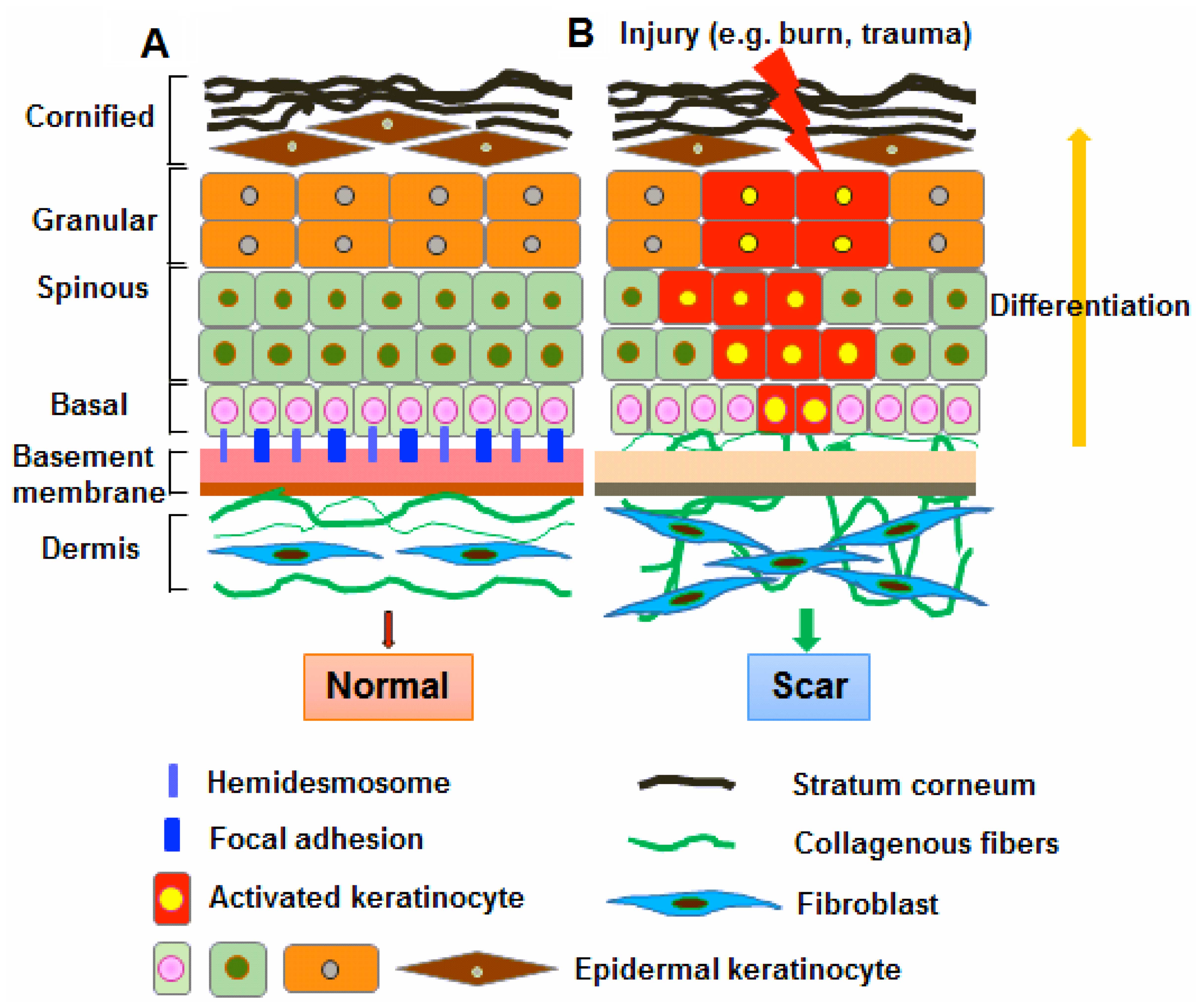|
1
|
Fuchs E and Raghavan S: Getting under the
skin of epidermal morphogenesis. Nat Rev Genet. 3:199–209. 2002.
View Article : Google Scholar : PubMed/NCBI
|
|
2
|
Breitkreutz D, Mirancea N and Nischt R:
Basement membranes in skin: unique matrix structures with diverse
functions? Histochem Cell Biol. 132:1–10. 2009. View Article : Google Scholar : PubMed/NCBI
|
|
3
|
Blanpain C and Fuchs E: Epidermal stem
cells of the skin. Annu Rev Cell Dev Biol. 22:339–373. 2006.
View Article : Google Scholar : PubMed/NCBI
|
|
4
|
Snippert HJ, Haegebarth A, Kasper M, Jaks
V, van Es JH, Barker N, van de Wetering M, van den Born M, Begthel
H, Vries RG, et al: Lgr6 marks stem cells in the hair follicle that
generate all cell lineages of the skin. Science. 327:1385–1389.
2010. View Article : Google Scholar : PubMed/NCBI
|
|
5
|
Broughton G II, Janis JE and Attinger CE:
The basic science of wound healing. Plast Reconstr Surg. 117(Suppl
7): 12S–34S. 2006. View Article : Google Scholar : PubMed/NCBI
|
|
6
|
Bellemare J, Roberge CJ, Bergeron D,
Lopez-Vallé CA, Roy M and Moulin VJ: Epidermis promotes dermal
fibrosis: role in the pathogenesis of hypertrophic scars. J Pathol.
206:1–8. 2005. View Article : Google Scholar : PubMed/NCBI
|
|
7
|
Andriessen MP, Niessen FB, Van de Kerkhof
PC and Schalkwijk J: Hypertrophic scarring is associated with
epidermal abnormalities: an immunohistochemical study. J Pathol.
186:192–200. 1998. View Article : Google Scholar
|
|
8
|
Teepe RG, Kreis RW, Koebrugge EJ,
Kempenaar JA, Vloemans AF, Hermans RP, Boxma H, Dokter J, Hermans
J, Ponec M, et al: The use of cultured autologous epidermis in the
treatment of extensive burn wounds. J Trauma. 30:269–275. 1990.
View Article : Google Scholar : PubMed/NCBI
|
|
9
|
Funayama E, Chodon T, Oyama A and Sugihara
T: Keratinocytes promote proliferation and inhibit apoptosis of the
underlying fibroblasts: an important role in the pathogenesis of
keloid. J Invest Dermatol. 121:1326–1331. 2003. View Article : Google Scholar : PubMed/NCBI
|
|
10
|
Lim IJ, Phan TT, Bay BH, Qi R, Huynh H,
Tan WT, Lee ST and Longaker MT: Fibroblasts cocultured with keloid
keratinocytes: normal fibroblasts secrete collagen in a keloidlike
manner. Am J Physiol Cell Physiol. 283:C212–C222. 2002. View Article : Google Scholar : PubMed/NCBI
|
|
11
|
Hahn JM, Glaser K, McFarland KL, Aronow
BJ, Boyce ST and Supp DM: Keloid-derived keratinocytes exhibit an
abnormal gene expression profile consistent with a distinct causal
role in keloid pathology. Wound Repair Regen. 21:530–544. 2013.
View Article : Google Scholar : PubMed/NCBI
|
|
12
|
Machesney M, Tidman N, Waseem A, Kirby L
and Leigh I: Activated keratinocytes in the epidermis of
hypertrophic scars. Am J Pathol. 152:1133–1141. 1998.PubMed/NCBI
|
|
13
|
Orazizadeh M, Hashemitabar M, Bahramzadeh
S, Dehbashi FN and Saremy S: Comparison of the enzymatic and
explant methods for the culture of keratinocytes isolated from
human foreskin. Biomed Rep. 3:304–308. 2015.PubMed/NCBI
|
|
14
|
Su L, Morgan PR and Lane EB: Keratin 14
and 19 expression in normal, dysplastic and malignant oral
epithelia. A study using in situ hybridization and
immunohistochemistry. J Oral Pathol Med. 25:293–301. 1996.
View Article : Google Scholar : PubMed/NCBI
|
|
15
|
Michel M, Török N, Godbout MJ, Lussier M,
Gaudreau P, Royal A and Germain L: Keratin 19 as a biochemical
marker of skin stem cells in vivo and in vitro: keratin 19
expressing cells are differentially localized in function of
anatomic sites, and their number varies with donor age and culture
stage. J Cell Sci. 109:1017–1028. 1996.PubMed/NCBI
|
|
16
|
Khanom R, Sakamoto K, Pal SK, Shimada Y,
Morita K, Omura K, Miki Y and Yamaguchi A: Expression of basal cell
keratin 15 and keratin 19 in oral squamous neoplasms represents
diverse pathophysiologies. Histol Histopathol. 27:949–959.
2012.PubMed/NCBI
|
|
17
|
Fuchs E: Skin stem cells: rising to the
surface. J Cell Biol. 180:273–284. 2008. View Article : Google Scholar : PubMed/NCBI
|
|
18
|
Yeh YC, Lin HH and Tang MJ: A tale of two
collagen receptors, integrin β1 and discoidin domain receptor 1, in
epithelial cell differentiation. Am J Physiol Cell Physiol.
303:C1207–C1217. 2012. View Article : Google Scholar : PubMed/NCBI
|
|
19
|
Borowska K, Jedrych B, Czerny K and
Zabielski S: The role of integrins in the physiologic and
pathogenic processes. Pol Merkur Lekarski. 21:362–366. 2006.Article
in Polish.
|
|
20
|
Lane SW, Williams DA and Watt FM:
Modulating the stem cell niche for tissue regeneration. Nat
Biotechnol. 32:795–803. 2014. View
Article : Google Scholar : PubMed/NCBI
|
|
21
|
Breitkreutz D, Koxholt I, Thiemann K and
Nischt R: Skin basement membrane: the foundation of epidermal
integrity - BM functions and diverse roles of bridging molecules
nidogen and perlecan. Biomed Res Int. 2013(179784)2013. View Article : Google Scholar
|
|
22
|
Timpl R and Brown JC: Supramolecular
assembly of basement membranes. BioEssays. 18:123–132. 1996.
View Article : Google Scholar : PubMed/NCBI
|
|
23
|
Hennings H, Michael D, Cheng C, Steinert
P, Holbrook K and Yuspa SH: Calcium regulation of growth and
differentiation of mouse epidermal cells in culture. Cell.
19:245–254. 1980. View Article : Google Scholar : PubMed/NCBI
|
|
24
|
Hennings H and Holbrook KA: Calcium
regulation of cell-cell contact and differentiation of epidermal
cells in culture. An ultrastructural study. Exp Cell Res.
143:127–142. 1983. View Article : Google Scholar : PubMed/NCBI
|
|
25
|
Burgeson RE and Christiano AM: The
dermal-epidermal junction. Curr Opin Cell Biol. 9:651–658. 1997.
View Article : Google Scholar : PubMed/NCBI
|
|
26
|
LeBleu VS, Macdonald B and Kalluri R:
Structure and function of basement membranes. Exp Biol Med
(Maywood). 232:1121–1129. 2007. View Article : Google Scholar
|
|
27
|
Iozzo RV: Basement membrane proteoglycans:
from cellar to ceiling. Nat Rev Mol Cell Biol. 6:646–656. 2005.
View Article : Google Scholar : PubMed/NCBI
|
|
28
|
Werner S, Krieg T and Smola H:
Keratinocyte-fibroblast interactions in wound healing. J Invest
Dermatol. 127:998–1008. 2007. View Article : Google Scholar : PubMed/NCBI
|
|
29
|
Moulin V, Castilloux G, Auger FA, Garrel
D, O'Connor-McCourt M and Germain L: Modulated response to
cytokines of human wound healing myofibroblasts compared to dermal
fibroblasts. Exp Cell Res. 238:283–293. 1998. View Article : Google Scholar : PubMed/NCBI
|
|
30
|
Gabbiani G, Ryan GB and Majne G: Presence
of modified fibroblasts in granulation tissue and their possible
role in wound contraction. Experientia. 27:549–550. 1971.
View Article : Google Scholar : PubMed/NCBI
|



